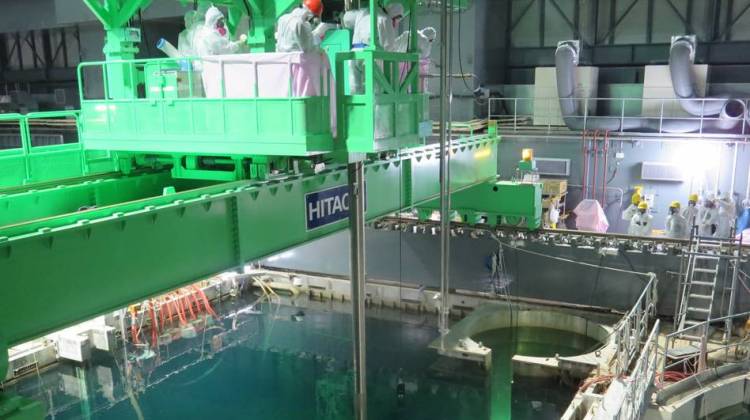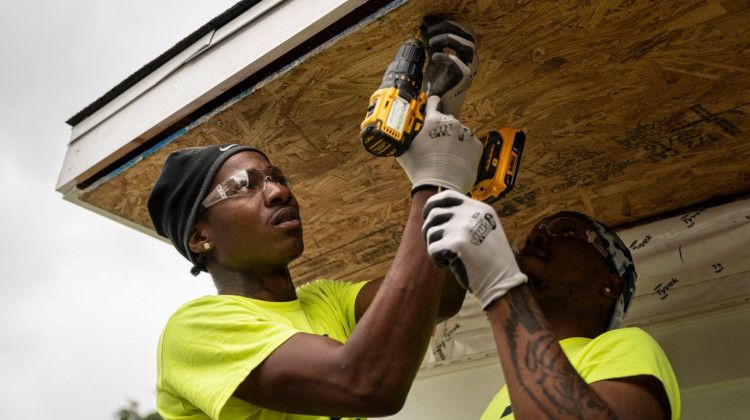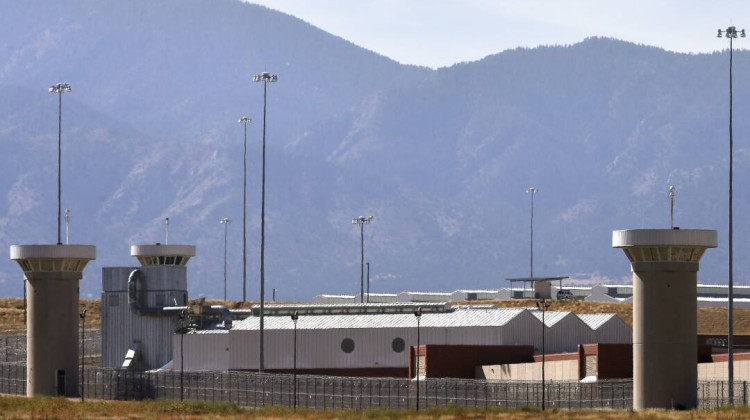Workers at Japan's Fukushima Dai-Ichi nuclear power station successfully completed the first day of a delicate operation to remove radioactive fuel rods from a reactor damaged in the March 2011 tsunami.
The fuel rods were removed from the Unit 4 reactor, which was offline at the time the tsunami smashed into the plant, overwhelming its backup systems. Although Unit 4 was spared the fate of three other reactors that melted down, a fire in its containment building weakened the structure.
Tokyo Electric, or TEPCO, the utility that operates Fukushima, has reinforced the Unit 4 containment structure, but NPR's Geoff Brumfiel says it's continued to be a big worry.
"It had more than 1,500 bundles of nuclear fuel being stored in a pool above the reactor core. Those bundles are a big threat at the plant: people worry that if there's another earthquake or something else happens, they might release more radioactivity," he tells All Things Considered.
TEPCO plans to remove unused fuel rods first and then the spent fuel. According to The Guardian, a total of 1,331 spent rods and 202 unused rods will be removed when the operation is complete.
"People move these fuel bundles around all the time during normal operations at a nuclear power plant," says Brumfiel. "But this is not a normal situation — this is a plant that's been heavily damaged. There's also a fear that one of these casks might get dropped, say during an earthquake."
To get the fuel rods into a more secure location, says Brumfiel, TEPCO workers are using a crane to lift them from their containment pool and then deposit them into a heavy cask.
"They are ... lift the cask out of the pool, and then carry it to another location on site where it can be stored more safely," Brumfiel says.
"It's a slow process that will take more than a year, and there are still three other reactors to go," he says.
And then there are the three reactors that melted down, which will pose an even greater challenge.
"They have fuel not just in the pools above the reactors, but in the cores themselves. That fuel is melted down and it's going to take a very, very long time to even figure out how to get that fuel out," he says. "Then, on top of it all, the site is full of radioactive water and that continues to be a problem."
9(MDEwMDc1MzM3MDEzNDczOTA0MDc1MzViMQ001))
 DONATE
DONATE









 Support WFYI. We can't do it without you.
Support WFYI. We can't do it without you.